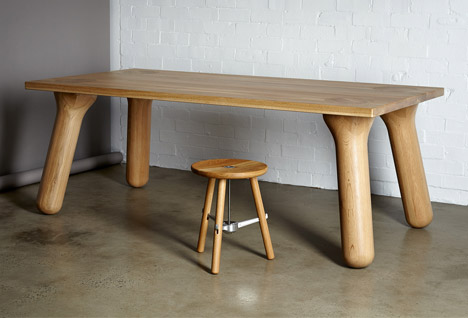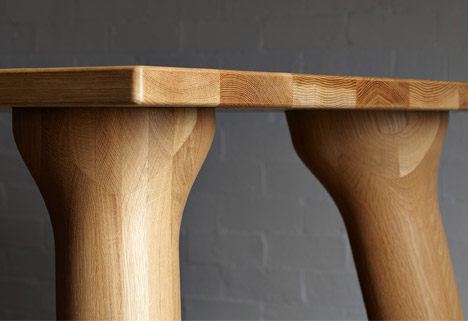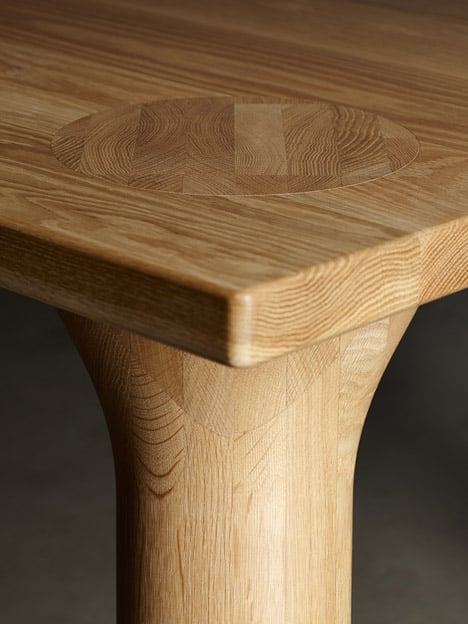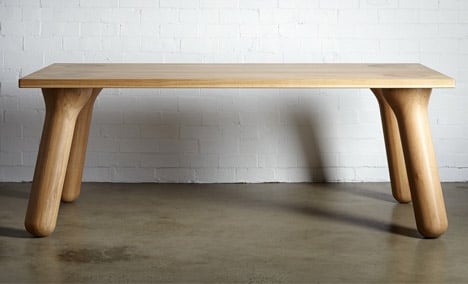Daast's Big Foot table sits on chubby wooden legs
The Big Foot dining table by Sydney design studio Daast features oversized rounded legs that slot into its slim tabletop.

The rotund legs, which are angled out slightly, slot through the tabletop, so the elliptical top edge of each one is visible in the surface of the table.
"The form and size of legs was inspired by natural properties of tree trunks," said Alex Kashin, who co-founded Daast with Andrew Southwood-Jones. "We wanted to translate the feeling of warmth, softness and steadiness that is usually associated with trees."

The legs are milled on a five-axis computer numerically controlled (CNC) cutting machine. "This shape of leg is very hard to achieve using traditional wood-turning methods because of the top detail," said Kashin.
They are fixed to the tabletop using a steel plate that also braces each leg – enabling the table to be taken apart for transportation.

"The Big Foot table explores soft round shapes within a mismatching of size that questions visual perception of scale," Kashin told Dezeen. "Glued, carved and slotted together, the table surface reads as a diagram of its own assembly."
Big Foot is available in American oak, ash or walnut. "The design accentuates the natural properties of timber and in particular American oak: grain, warmth, tactility and strength," said the designers.

"We chose American oak because of its warm colour and consistent grain," they added. "It is also very stable timber which is very good to work with."
Photography is by Rodrick Bond.